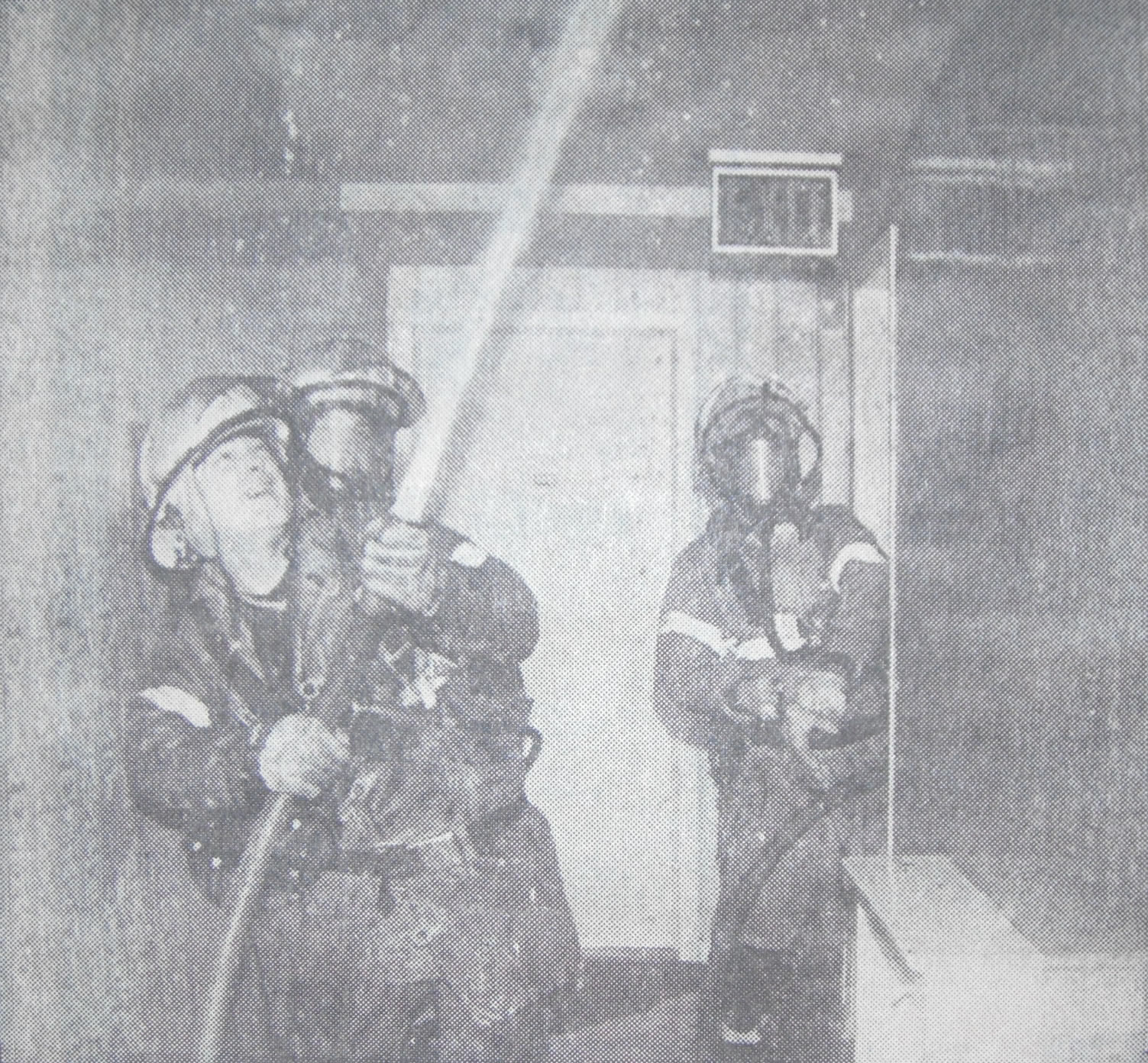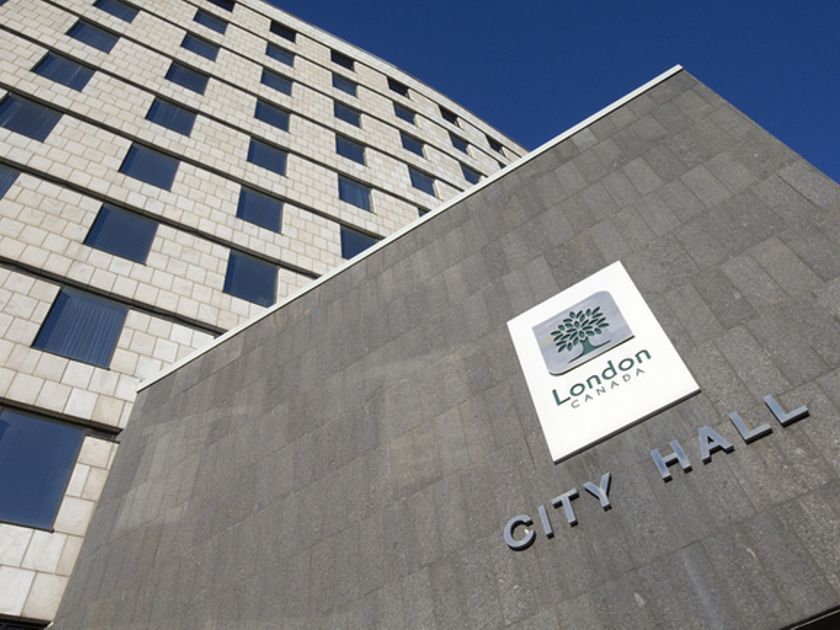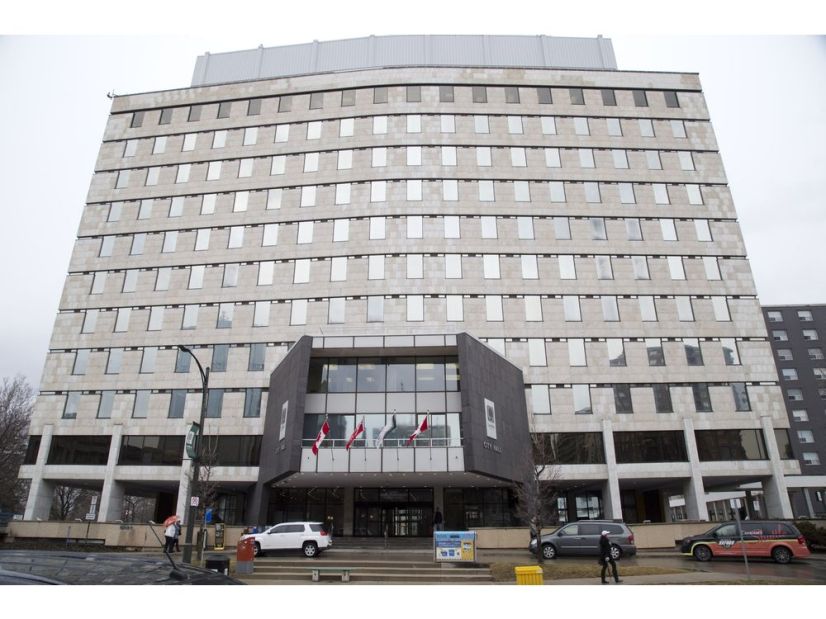collective agreements for two years and in the process limited wage increases for 621,000 government employees to six per cent in 1982 and five per cent this year. It also took away strike rights and limited bargaining to non-compensation issues, such as health and safety, but only if management and unions agree to discuss the issues.
It covers federal workers in the public service, including public works employees, customs workers, prison guards, airport firemen and the military; those working for crown corporations, the post office, the CBC, Air Canada and most railways and those employed by crown agencies such as the Canadian radio-television and telecommunications commission, the Canadian transport commission, and the Economic Council of Canada.
Until Nov. 8, Ontario’s inflation restraint act, Bill 179, limited wage increases for 680,000 workers paid with provincial and municipal money to five per cent for at least one year, with an additional year of nine per cent for some. It allowed bargaining on non-monetary issues—if both parties agreed to talk—and eliminated strike action. Among those covered were teachers, professors, police, firefighters, bus drivers, municipal employees and thousands of workers employed directly by the government.
The updated Ontario restraint program restores the right to strike for about 260,000 employees of municipal and school boards, but 80,000 civil servants directly employed by the government—who have never had the right to strike—still cannot withdraw services. The government said it will enforce its five per cent guideline on the civil servants but will rely on school boards, hospitals and municipal governments, which employ the other 600,000 public sector workers, to enforce the guideline. The government will give these employers only enough grant money to cover wage increases of five per cent.
Governments say restraint policy is necessary to reduce inflation and set an example for employers in the private sector. And so far, most government and business spokesmen say restraint programs have been successful, helping cut inflation from double digit figures to about five per cent. Government and business people acknowledge the recession has also helped reduce inflation.
“Business in general has been supportive. Controls have eased things for the private sector because there has been enough publicity surrounding five and six to allow management to more easily have those kinds of increases accepted by employees,” said Jack Mann, executive vice-president of the London Chamber of Commerce.
“Controls have had a very obvious impact. They have held wages and freed up money for the government to use in other areas, including job creation,” said George Orser, assistant secretary of staff relations and compensation for the federal Treasury Board which handles public service collective bargaining for the federal government.
“It is very startling to look at the reports and see the preponderance of six and fives (wage settlements). There has been a very definite impact by way of example. There has been a been a beneficial impact on inflation,” said Orser, noting wage settlements in the private and public sectors were below six per cent in the first quarter of this year, compared to 12.9 per cent in early 1982. Orser predicted federal wage control legislation will be lifted in May of next year when the program expires.
“We think it stinks.” This, from a London hospital worker whose wages have been held at about $15,000 by controls, sums up the average public sector worker’s sentiments when wage restraint is the topic.
It seems most public workers have the same angry response when discussing pay controls: Inflation could have been reduced without wage restraints; controls single out the public sector; across-the-board percentage increases further widen the gap between high and low wage earners; the economy is losing thousands of dollars in much needed spending, hindering rather than helping economic recovery.
But in even angrier tones public sector workers say wage controls have robbed them of the democratic right to bargain they fought for years to achieve. It has some saying they’d rather keep their monthly union dues in their pay envelopes, now that unions have been rendered nearly powerless.
Although Labour Canada data indicates public sector wage gains outstripped private sector settlements in 1981 and 1982, public workers feel they have more than enough evidence of the injustice and inequity wrought by controls to back their case for abolishment of the legislation:
- In the federal public service, controls have meant secretary-typists, mainly women, aren’t receiving paid maternity leave benefits like many of their female government counterparts, says Curtis of PSAC.
In 1982, federal government clerks received the benefit—which in conjunction with unemployment benefits pays 93 per cent of a woman’s salary for up to 17 weeks while on maternity leave—and it was assumed secretary-typists would receive equal compensation in their 1983 contract. But with the advent of controls and removal of bargaining rights, it hasn’t happened. - In their last contract before wage restraints, liquor control board of Ontario employees sought a 12 to 15 per cent pay increase, which LCBO Employees’ Union Zone 4 representative Charles Restorick of London said would have pulled their earnings closer to those of private sector Brewer’s Retail employees, who, he maintained, perform essentially the same job but with less responsibility. LCBO workers received only nine per cent and in their latest contract, settled in June, they received a five per cent pay boost, several per cent below that negotiated by Brewer’s Retail workers. It left full-time liquor store employees more than $5,000 behind full-time beer store workers’ annual wages.
And to add insult to injury, Restorick said his members’ wages were limited to nine and five per cent increases while liquor prices rose up to 33 per cent. - London secondary school teachers feel controls attack them from two sides. They were hopeful the 12 per cent raise they signed for in 1982 would put an end to their unenviable distinction as the lowest paid high school teachers in the province. But with the pact rolled back to nine per cent by controls, followed by a five per cent pay increase this year, their pay remains the lowest of teachers working for 79 school boards in Ontario. They’re also paid less than elementary school teachers in London.
In addition, teachers complain controls don’t allow for full increment pay increases for public workers such as themselves, approaching the $35,000 salary plateau. The teachers say this opens up pay gaps of up to $1,850 a year between teachers with equal experience and qualifications. - Eleven per cent pay raises negotiated in good faith by 17,000 Ontario government office and clerical staff in the second year of a two-year contract were rolled back to five per cent. Also, flat $7-a-week raises designed to help close the disparity between high and low wage earners in the bargaining unit were cancelled.
“How do you think a supplier of paper towels to the government would react if he thought he was going to get paid that amount and suddenly the government said we’re going to pay you six per cent less and you must continue to supply the towels?” asked Kati FitzRandolph, of the Ontario Public Service Employees Union, which represents 75,000 government employees. “It’s a clear case of our people getting it in the left ear.” - At Victoria Hospital in London, Edna May and her fellow OPEIU workers were hoping for a 10 to 12 per cent wage increase and improved benefits when they signed their existing contract and they contemplated a similar increase when it expires Jan. 1. For the OPEIU members, mainly office workers, it was a desperate attempt to catch up with the other workers’ wages at the hospital. But thanks to controls, double digit wage increases are out of the question.
Their 1983 increase was held to five per cent and 1984’s raise is likely to be about the same. It has cost the average worker about $700 and, at average annual salaries of about $15,000 a year, OPEIU people remain the lowest paid in the hospital, earning less than cleaners.
According Labour Canada, average wage settlements in public sector bargaining units of more than 500 employees averaged 12.9 per cent in 1981, compared to 11.4 per cent in the private sector; last year it was 10.2 per cent public, 8.8 per cent private. Not until the first quarter of 1983, when controls were in full force, did private sector wage settlements at 5.7 per cent top public gains at 3.9 per cent. The figures are based on base pay rates.
collective agreements for two years and in the process limited wage increases for 621,000 government employees to six per cent in 1982 and five per cent this year. It also took away strike rights and limited bargaining to non-compensation issues, such as health and safety, but only if management and unions agree to discuss the issues.
It covers federal workers in the public service, including public works employees, customs workers, prison guards, airport firemen and the military; those working for crown corporations, the post office, the CBC, Air Canada and most railways and those employed by crown agencies such as the Canadian radio-television and telecommunications commission, the Canadian transport commission, and the Economic Council of Canada.
Until Nov. 8, Ontario’s inflation restraint act, Bill 179, limited wage increases for 680,000 workers paid with provincial and municipal money to five per cent for at least one year, with an additional year of nine per cent for some. It allowed bargaining on non-monetary issues—if both parties agreed to talk—and eliminated strike action. Among those covered were teachers, professors, police, firefighters, bus drivers, municipal employees and thousands of workers employed directly by the government.
The updated Ontario restraint program restores the right to strike for about 260,000 employees of municipal and school boards, but 80,000 civil servants directly employed by the government—who have never had the right to strike—still cannot withdraw services. The government said it will enforce its five per cent guideline on the civil servants but will rely on school boards, hospitals and municipal governments, which employ the other 600,000 public sector workers, to enforce the guideline. The government will give these employers only enough grant money to cover wage increases of five per cent.
Governments say restraint policy is necessary to reduce inflation and set an example for employers in the private sector. And so far, most government and business spokesmen say restraint programs have been successful, helping cut inflation from double digit figures to about five per cent. Government and business people acknowledge the recession has also helped reduce inflation.
“Business in general has been supportive. Controls have eased things for the private sector because there has been enough publicity surrounding five and six to allow management to more easily have those kinds of increases accepted by employees,” said Jack Mann, executive vice-president of the London Chamber of Commerce.
“Controls have had a very obvious impact. They have held wages and freed up money for the government to use in other areas, including job creation,” said George Orser, assistant secretary of staff relations and compensation for the federal Treasury Board which handles public service collective bargaining for the federal government.
“It is very startling to look at the reports and see the preponderance of six and fives (wage settlements). There has been a very definite impact by way of example. There has been a been a beneficial impact on inflation,” said Orser, noting wage settlements in the private and public sectors were below six per cent in the first quarter of this year, compared to 12.9 per cent in early 1982. Orser predicted federal wage control legislation will be lifted in May of next year when the program expires.
“We think it stinks.” This, from a London hospital worker whose wages have been held at about $15,000 by controls, sums up the average public sector worker’s sentiments when wage restraint is the topic.
It seems most public workers have the same angry response when discussing pay controls: Inflation could have been reduced without wage restraints; controls single out the public sector; across-the-board percentage increases further widen the gap between high and low wage earners; the economy is losing thousands of dollars in much needed spending, hindering rather than helping economic recovery.
But in even angrier tones public sector workers say wage controls have robbed them of the democratic right to bargain they fought for years to achieve. It has some saying they’d rather keep their monthly union dues in their pay envelopes, now that unions have been rendered nearly powerless.
Although Labour Canada data indicates public sector wage gains outstripped private sector settlements in 1981 and 1982, public workers feel they have more than enough evidence of the injustice and inequity wrought by controls to back their case for abolishment of the legislation:
- In the federal public service, controls have meant secretary-typists, mainly women, aren’t receiving paid maternity leave benefits like many of their female government counterparts, says Curtis of PSAC.
In 1982, federal government clerks received the benefit—which in conjunction with unemployment benefits pays 93 per cent of a woman’s salary for up to 17 weeks while on maternity leave—and it was assumed secretary-typists would receive equal compensation in their 1983 contract. But with the advent of controls and removal of bargaining rights, it hasn’t happened. - In their last contract before wage restraints, liquor control board of Ontario employees sought a 12 to 15 per cent pay increase, which LCBO Employees’ Union Zone 4 representative Charles Restorick of London said would have pulled their earnings closer to those of private sector Brewer’s Retail employees, who, he maintained, perform essentially the same job but with less responsibility. LCBO workers received only nine per cent and in their latest contract, settled in June, they received a five per cent pay boost, several per cent below that negotiated by Brewer’s Retail workers. It left full-time liquor store employees more than $5,000 behind full-time beer store workers’ annual wages.
And to add insult to injury, Restorick said his members’ wages were limited to nine and five per cent increases while liquor prices rose up to 33 per cent. - London secondary school teachers feel controls attack them from two sides. They were hopeful the 12 per cent raise they signed for in 1982 would put an end to their unenviable distinction as the lowest paid high school teachers in the province. But with the pact rolled back to nine per cent by controls, followed by a five per cent pay increase this year, their pay remains the lowest of teachers working for 79 school boards in Ontario. They’re also paid less than elementary school teachers in London.
In addition, teachers complain controls don’t allow for full increment pay increases for public workers such as themselves, approaching the $35,000 salary plateau. The teachers say this opens up pay gaps of up to $1,850 a year between teachers with equal experience and qualifications. - Eleven per cent pay raises negotiated in good faith by 17,000 Ontario government office and clerical staff in the second year of a two-year contract were rolled back to five per cent. Also, flat $7-a-week raises designed to help close the disparity between high and low wage earners in the bargaining unit were cancelled.
“How do you think a supplier of paper towels to the government would react if he thought he was going to get paid that amount and suddenly the government said we’re going to pay you six per cent less and you must continue to supply the towels?” asked Kati FitzRandolph, of the Ontario Public Service Employees Union, which represents 75,000 government employees. “It’s a clear case of our people getting it in the left ear.” - At Victoria Hospital in London, Edna May and her fellow OPEIU workers were hoping for a 10 to 12 per cent wage increase and improved benefits when they signed their existing contract and they contemplated a similar increase when it expires Jan. 1. For the OPEIU members, mainly office workers, it was a desperate attempt to catch up with the other workers’ wages at the hospital. But thanks to controls, double digit wage increases are out of the question.
Their 1983 increase was held to five per cent and 1984’s raise is likely to be about the same. It has cost the average worker about $700 and, at average annual salaries of about $15,000 a year, OPEIU people remain the lowest paid in the hospital, earning less than cleaners.
According Labour Canada, average wage settlements in public sector bargaining units of more than 500 employees averaged 12.9 per cent in 1981, compared to 11.4 per cent in the private sector; last year it was 10.2 per cent public, 8.8 per cent private. Not until the first quarter of 1983, when controls were in full force, did private sector wage settlements at 5.7 per cent top public gains at 3.9 per cent. The figures are based on base pay rates.






